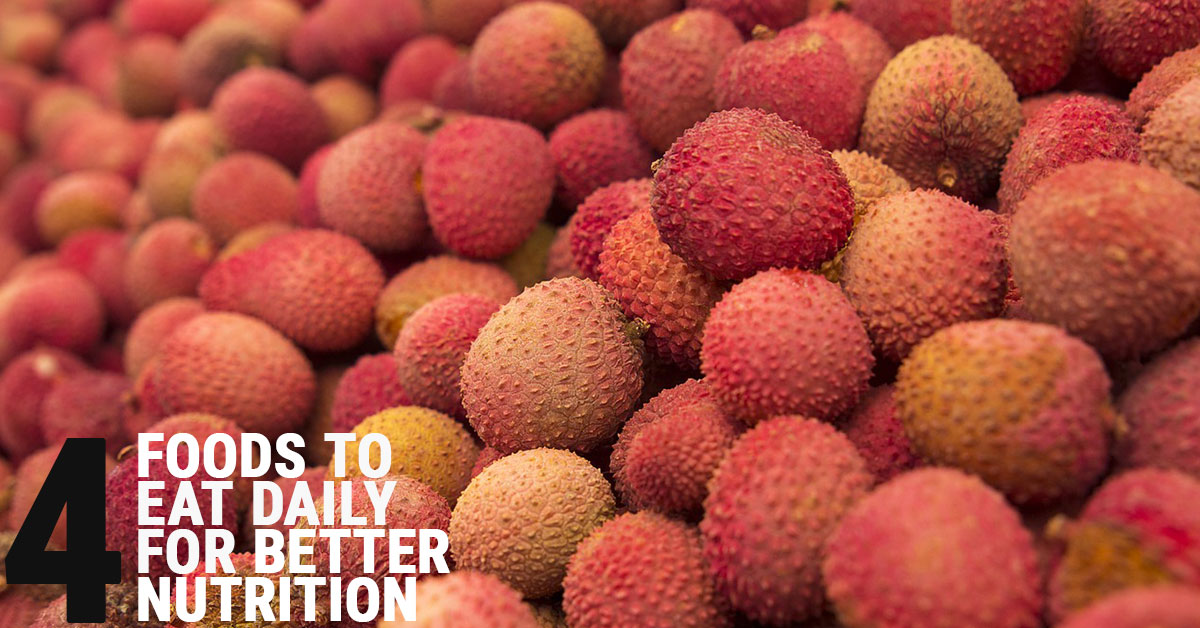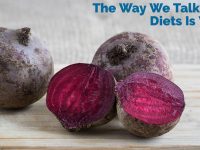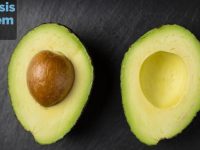Here at Climbing Nutrition, I spend a lot of time trying to define the edges of what makes “good nutrition” for a climber. I do this on purpose. As I’ve mentioned before, I’ve never worked with a climber who didn’t “eat healthy”—but I’ve also never worked with a climber who ate “healthy for a climber”. It seems paradoxical, but what it shows me is that most climbers understand the core of what makes a diet good but don’t know why, how, or where their diet should differ from another person’s—so I write to resolve those edges.
Despite my predilection for skimming the fringes, though, I’m also avid about “general nutrition”. My graduate degree is in clinical nutrition (the type of nutrition used in medical nutrition therapy), and if I didn’t fall in love with sports nutrition and applying sports nutrition concepts to climbers then I’d be wading those indistinct central waters daily. And even though most climbers do eat healthy, I think it can be helpful to review good dietary habits from time to time.
All this is to say that while I usually write about those fine distinctions that make a diet great for climbers, today I’m going to write about what makes a diet great in general—because while I’m confident that most of you eat healthy, there’s probably still room for improvement. At the very least, there’s an important lesson (and one that is often ignored, forgotten, or ridiculed) about what makes food “good”.
One More Thing…
Last year, I wrote my first book on nutrition: “The Multivitamin Lie“. If it’s not clear from the sensationalistic title, the book is about the utter lack of evidence for taking a multivitamin, and why you only really need food to meet all your vitamin and mineral needs (even if your diet isn’t particularly great). And when I say why, I mean the ways that public perception over nutrient needs have been warped, often quite purposefully, to predispose one to believing their diet is inadequate.
A large portion of the book is devoted to the micronutrients themselves and their best dietary sources; I spent hundreds of hours poring through the USDA database to compile top 25 food lists for each vitamin and mineral. In the process, it became clear that some food groups punched above their weight. I’m going to share these food groups here, with an extra emphasis on an additional virtue they all share.
I only mention this so you know the basis of my data. I do share some additional, relevant meta-analyses here and there—especially when combating pernicious myths—but much of my research is invisible here because it comes from a secondary source, one that I wrote myself. It’s a synthesis of data collated from numerous sources, impossible to discretely reference, but the appropriate references are available in my book.
If you’re interested in reading what I have to say on multivitamins and meeting your nutrient needs with food alone, my book is available on Amazon (it’s an ebook). I also run sales on it from time to time, and will announce the next sale here and on the Climbing Nutrition Facebook page when I run it. Naturally, I’m biased towards my own work, but it is a good read at the very least to understand how nutrient needs work—a topic far too large to address in a single blog post!
Okay, onto the foods themselves.
Food #1: Legumes
Legume is the botanical term for members of the pea family, which most notably includes peas, beans, and lentils. It also technically includes peanuts, but they’re much more similar to tree nuts and thus I don’t include them here. If you read the recent article on protein sources then you know that nearly all legumes are high-quality proteins, but they offer far more than that—legumes are a complete nutritional package.
To begin with, legumes are micronutrient-rich. Most legumes contain superb amounts of most of the B vitamins, and are almost beyond compare (at least in the vegetable world) for minerals. With the sole exception of calcium, legumes are a decent to excellent source of every major mineral, including the notoriously challenging potassium. And while the absorption of those minerals is not always as great as it would be from other sources, the sheer quantity more than makes up for it.
Legumes are also one of the best sources of fiber, if not the best source. Even better, legumes are particularly rich in the soluble fiber that encourages the development of a healthy gut microbiome, an area that is receiving more and more focus for its role in a variety of problems from obesity to mental disorders.
Anecdotally, legumes are a dietary staple of every single “Blue Zone” culture—the cultures that regularly witness members live to be 90-100+ years old. Beyond the Blue Zone cultures, legumes are a dietary staple across much of the world. Whether in the form of whole beans, or falafel, or fermented soy products, there are a ton of ways to prepare and enjoy legumes.
It may be that you’re not particularly a fan of legumes—perhaps you had some bad experiences with lima beans or frozen peas. But I challenge you to get outside the frozen food aisle and discover the rich taste of mature beans and lentils. If you don’t, there are plenty of other great foods to choose from—but you’re missing out on a healthy, delicious food!
Food #2: Nuts & Seeds (Including Peanuts)
Though not closely related botanically, nuts and seeds (including peanuts) share many common traits, all of which make them great to include in your daily diet. Some nuts and seeds are typically promoted as “more healthy” than others, but there’s really no evidence that you’ll be any healthier choosing almonds over peanuts, or sunflower seeds over cashews.
As with legumes, nuts and seeds are mineral-rich, which has inspired cult followings such as the one behind pumpkin seeds and magnesium. There’s absolutely no reason to include any single nut or seed in your diet just to get more of a certain mineral, because all nuts and seeds offer their own advantages and disavantages in the mineral department—and also because the minerals, as beneficial as they are, are just a single, small reason for why nuts and seeds are so great.
A much bigger reason is their fat content. Yes, nuts and seeds are fatty—but despite their calorie-density they are not linked to weight gain. In fact, they’re more likely to help with weight loss and weight maintenance, though the trend is statistically insignificant. What’s more, a diet rich in nuts is linked to better blood lipid levels and lower risk of cardiovascular disease, due in no small part to the significant quantities of polyunsaturated fats, monounsaturated fats, and phytosterols (cholesterol-like lipids in plants that reduce the absorption of cholesterol).
Last by not least, nuts and seeds are just plain tasty. Eating a handful of nuts or seeds feels like an indulgence, and there aren’t many indulgences out there that are simultaneously health foods.
Food #3: Cooked Vegetables
There’s a whole raw movement devoted to not heating foods, but they’re really missing out on the incredible advantages of cooked foods—namely, that cooked foods tend to taste better, be easier to eat, and are better digested. This extends to vegetables as well, which many people struggle to get adequate amounts of. There is a virtue to eating some vegetables raw, but in terms of practical health, cooked vegetables trump raw ones every time.
It helps to know that the temperatures used to heat food in the home kitchen are nowhere near high enough or lengthy enough to actually degrade the nutrient content of any vegetable more than a little—and also that the nutrients from cooked veggies are often better absorbed, making the debate at best a wash. But even if you do lose some nutrients in the cooking process, the sheer increase in capacity more than makes up for it. A cup of raw spinach is roughly 1 oz of veggies; a cup of cooked spinach is a whopping 6.5 oz. Even if you lost an unheard of 30% of the nutrients, you’d still get 4.5 times as much nutrition from the cooked cup.
Of course, not every vegetable reduces quite so much as spinach, but almost without fail you can eat more cooked vegetables than raw vegetables, whether it’s due to reduction, improvements in texture, or better taste. You can also work culinary magic with cooked vegetables, hiding them in places you’ll never even notice them, which makes it even easier to amplify your veggie intake.
If you enjoy raw veggies, don’t let me turn you away from them—they’re still healthy! A lot of people set their health goals based on what they perceive to be “ideal behavior”, though, and that might include heating veggies less in order to derive more nutrients. The thing is that cooked veggies are 100% as healthy as raw ones, and efforts to debase heat are dogmatic, not scientific. The bottom line is that you should eat veggies the way you like to eat them—and if that means always cooking them, then go for it.
Food #4: Fruit
Fruit is sometimes castigated as a poor substitute for vegetables. Ostensibly, fruits are like vegetables, but less nutrient-rich and far higher in calories (especially from “toxic sugar“) so they get the reputation of being some sort of cheap knock-off vegetable, and are sometimes even said to be bad for you. How ridiculous.
Let me set the record straight: fruit is amazing, amazing for you, and you’re amazing if you eat it. Despite being more caloric than vegetables, fruits are still inversely associated with weight—meaning the more fruit a person eats, the less heavy they’re likely to be. What’s more, fruits are only barely less correlated with weight than vegetables, as in there’s no strong evidence that your weight would change at all if you routinely chose to eat oranges over broccoli.
If that’s not enough to convince you, consider the results from a recent meta-analysis that found that fruits were ever so slightly more protective against all-cause mortality (death from any cause) than vegetables. Okay, the difference really isn’t even worth mentioning (it was a single percentage point)—but the point remains that fruits didn’t perform at all worse than vegetables when it came to protecting against a variety of causes of death.
For all intents and purposes, it appears that fruits = vegetables as far as your health is concerned. If you’d rather eat vegetables (and you’re actually going to eat them), then that’s perfectly okay, too—but 95+% of people would rather kick back a mango than a cup of broccoli, and they should feel great doing so.
“Good Food” Should Taste Good, Too
Did you notice a trend? All the foods I mentioned above are enjoyable, and because they’re enjoyable, you’re much more likely to eat them in amounts that are meaningful for your health. That’s the foundation of good nutrition—not super foods and supplements, but good habits.
Think of it this way:
You’re a climber, and it’s safe to assume you love climbing. You have absolutely no trouble going to the gym or getting outside to exercise because every time you do you have a great time. Climbing may not be the absolutely “ideal” exercise—the exercise that is perfectly optimized to improve your health—but it’s absolutely a great, healthy habit, and because you love it, you rarely have to motivate yourself to “make the right choice”.
On the other hand, millions of people don’t get enough exercise because they think exercise is something that isn’t fun. To them, exercise means jumping on the treadmill to burn a requisite number of calories or doing a lap circuit training. It’s a constant chore, and as a result it’s never a habit. Even if they exercise “better” (they don’t, this is just an analogy!), they do it so inconsistently that it doesn’t matter. They’d be better off doing sports they enjoy, even if they’re less ideal, because they’ll actually do them.
It’s the same thing with nutrition—the moment your diet becomes a chore, it becomes challenging to maintain. The secret is to stop worrying about where your choices fall on a hypothetical continuum of ideality and start enjoying the healthy foods you actually want to eat more frequently. Most of the time, the difference between the “ideal choice” and “easy choice” is virtually nil, as we saw with fruits and cooked veggies.
Look—there are a lot of healthy foods out there, and you probably don’t like some of them. That’s okay! Don’t force yourself to eat foods you don’t particularly like because there is (almost) always another food that you do like that is equally nutritious. And in a similar vein, just because a food is delicious does not make it unhealthy! Eat fruits and nuts! Wilt your spinach to nothing! Put peanut sauce on your broccoli! Enjoy your diet!
But do at least try to find foods you enjoy from each of the four groups above. It can be just one food from each or a variety, but find the foods you love and make them a habit.















Great post.